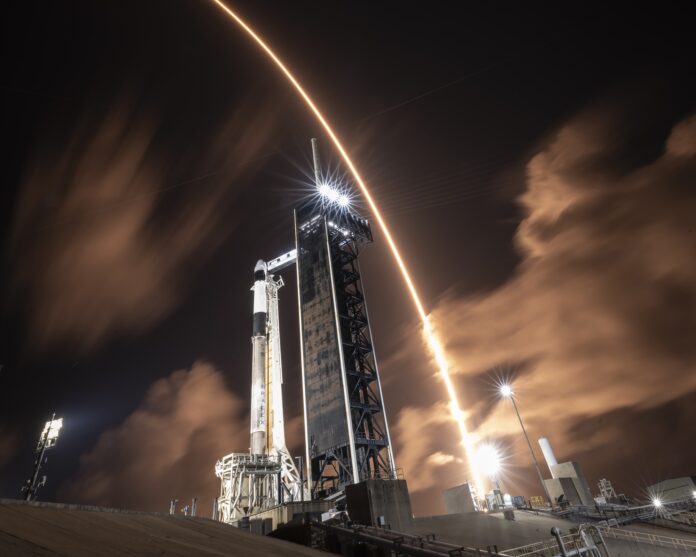SpaceX Back to Launching Falcon 9 Rockets
After a short pause by the FAA, SpaceX is back to launching its Falcon 9 rockets.
On August 31, one Falcon 9 took off from Cape Canaveral at 3:43 a.m. Eastern, sending 21 Starlink satellites into space. Just over an hour later, another Falcon 9 launched from Vandenberg at 4:48 a.m. Eastern with another 21 Starlink satellites. These two launches were only 65 minutes apart, the shortest time between Falcon 9 launches ever.
These were the first launches after an incident on August 28 when a Falcon 9 booster was lost while landing on a droneship in the Atlantic. Even though the rocket successfully deployed its Starlink satellites, the FAA stopped further Falcon 9 launches that day to look into the safety concerns.
Late on August 30, the FAA gave the green light for launches to start again while they continue to investigate.
“The SpaceX Falcon 9 vehicle may return to flight operations while the overall investigation of the anomaly during the Starlink Group 8-6 mission remains open, provided all other license requirements are met,” the agency said in a brief statement. “SpaceX made the return to flight request on Aug. 29 and the FAA gave approval on Aug. 30.”
Neither SpaceX nor the FAA have shared more details about the failed landing. Jon Edwards from SpaceX mentioned online that the incident was just a recovery problem and did not endanger the main mission or public safety.
The FAA can permit launches even if an investigation is ongoing if they decide the issue doesn’t risk public safety. This was likely the case since the failure occurred during landing far from the coast.
One important launch, however, is still delayed. The launch of Polaris Dawn, which will send a Crew Dragon with four people into space, hasn’t been rescheduled. This private mission includes the first-ever non-government spacewalk.
Even before the landing issue, SpaceX delayed this launch due to concerns about weather at splashdown sites near Florida. They also needed droneships to support the booster landing, pushing the launch to no earlier than September 4.
Jared Isaacman, the Polaris program backer and commander of Polaris Dawn, posted on social media, “The primary factor driving the launch timing for Polaris Dawn is the splashdown weather within Dragon’s limits…”
He added the crew is in quarantine and ready to go within 30 hours of a good weather forecast. The launch window is early morning each day.
Polaris Dawn needs to launch by mid-September so SpaceX can prepare the launch pad for NASA’s Europa Clipper mission in October.
